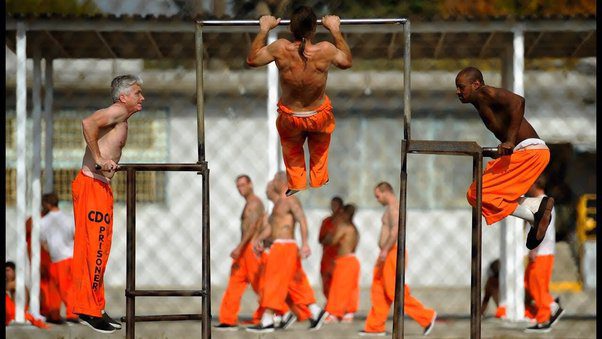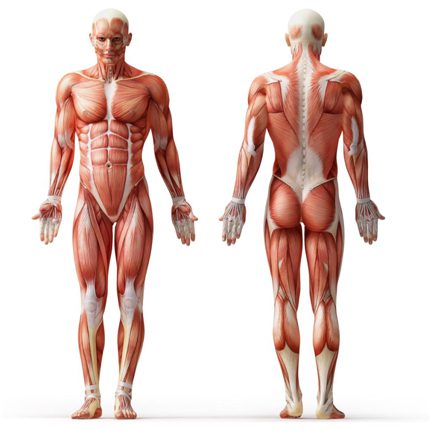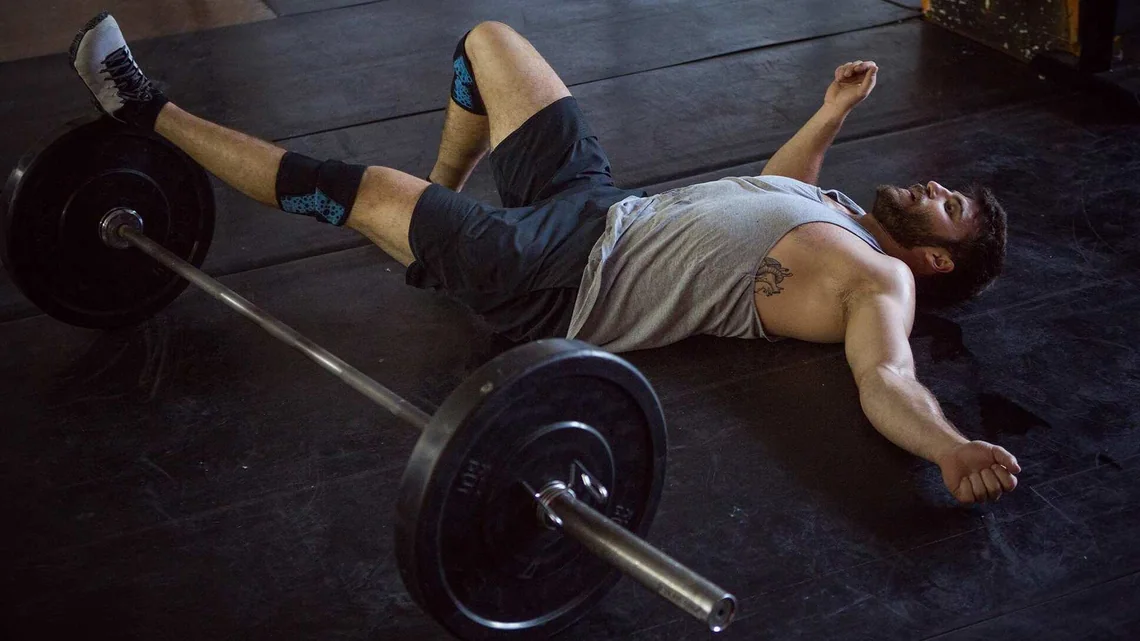This article will explore the concept of overtraining to determine if it represents a genuine issue for bodybuilders or whether its impact has been blown out of proportion.
Within the bodybuilding community, there’s a prevailing notion that excessively prolonged or frequent muscle training, without proper rest intervals, can lead to overtraining.
Overtraining describes a catabolic state induced by an overload of physical activity. In this condition, cortisol levels spike, leading to muscle degradation and an increase in subcutaneous fat.
Bodybuilders harbor a particular concern about overtraining, often limiting their workout sessions to less than an hour and targeting each muscle group just 1-2 times per week to avoid it.
Celebrated figures in bodybuilding, like Rich Piana, have publicly shared their perspectives on overtraining. In a brief 3-minute YouTube clip, Piana criticized individuals as being “lazy” and seeking “excuses,” responding to critiques that he was overtraining following his extensive 3-hour chest workout.
The Veracity
Overtraining is frequently magnified in the realm of bodybuilding. There are practical demonstrations that directly overtraining a muscle is a rarity.
Even so, it is possible to overexert your central nervous system, leading to prolonged muscle fatigue, a condition also referred to as overtraining.
Listed below are strong, real-world arguments that highlight the challenge in reaching a state of overtraining through resistance training alone.
Evidence: The Magnification of Overtraining
If overtraining were as prevalent as claimed, due to prolonged periods of weightlifting, the following real-world evidence wouldn’t be feasible:
Evidence #1 – Gymnasts
Gymnasts are renowned for their strikingly aesthetic builds, which many natural bodybuilders aim to emulate.

Several Olympic gymnasts began their careers with ectomorph frames, featuring barely noticeable muscle bulk. With time and rigorous training, they have achieved substantial development in their biceps, deltoids, and lats.
Contrary to what some might think, gymnasts aim not to bulk up as added weight can impede their performance. Since muscles are dense, allegations of anabolic steroid use in gymnastics are scarce; athletes tend to avoid performance-enhancing steroids as they could hamper their ability to compete effectively.
Rather, it’s more typical for gymnasts to utilize diuretic compounds (1) to shed water weight and potentially gain an improper edge.
Therefore, it’s deduced that gymnasts’ muscle development is a natural result of their rigorous training regime.
When comparing Olympic gymnasts, who exhibit extraordinary biceps, triceps, lats, and deltoids development even when benchmarked against natural bodybuilders, it raises questions within the bodybuilding community:
- What makes the strength training of gymnasts more effective than traditional weightlifting?
- Should bodybuilders incorporate more gymnastic movements or calisthenics into their routines?
Observing amateur gymnasts who aren’t yet at the elite level, they also regularly engage in calisthenic exercises; yet, their muscularity isn’t as pronounced as that of seasoned Olympic gymnasts.

The Olympic gymnasts undergo much more intense training schemes, dedicating several more hours each week to their craft. This suggests that the advantage does not lie in the type of exercise performed when compared to bodybuilding.
Instead, it seems that the gymnasts’ high-volume training is what drives remarkable muscle hypertrophy.
Note: It’s worth mentioning that bodybuilders also integrate bodyweight exercises into their routines, which indicates that the discrepancy in muscle development is likely a product of increased volume and TUT (time under tension).
Comparing Gymnast and Bodybuilder Training Volumes
The typical weightlifter might train their arms once or twice a week, adding up to approximately 1-2 hours of exercise volume for the biceps and triceps.
According to Gina Paulhus, a participant in the US Olympic program, gymnasts may spend around 30 hours a week training (2). This translates to about 6 hours per day, 5 days a week.
Gymnasts practice six distinct events: floor, pommel horse, still rings, vault, parallel bars, and horizontal bar.
Centering on the pommel horse, rings, and the two bar events which are notably challenging for the upper body, and allowing an hour for warm-ups and cool-downs, gymnasts are likely dedicating about 50 minutes to each of the six routines in their 5-hour stretch.
This results in approximately 200 minutes, or 3 hours and 20 minutes, of intense upper body training per day.
Multiplying that by 5 (days), you get 16 hours of focused upper body training each week.
In contrast, the average bodybuilder dedicates around:
- 1 hour for chest, 1 hour for back, 1 hour for arms, and 30 minutes for shoulders totaling 3 hours and 30 minutes across a week.
(Main muscle groups are engaged over a 7-day cycle.)
Conclusion: When comparing the two, an Olympic gymnast’s musculature is subjected to tension almost 5 times longer than that of the average weightlifter within the same timeframe.
Challenging the Common Bodybuilding Belief
Evidence suggests that the notion frequently held in bodybuilding circles—that training a muscle group for over an hour multiple times a week constitutes overtraining—is questionable.
Real Life Proof #2 – Inmates

There are accounts of individuals witnessing their friends or relatives who have been incarcerated experience significant physical changes. While theories abound, the scientific rationale for these remarkable prison body transformations remains elusive.
Note: It’s true that some inmates can acquire anabolic steroids and achieve muscle gains. Nonetheless, there are numerous claims of prisoners gaining muscle mass through natural means. Those close to these individuals often assert with confidence that these physical changes occurred without drug use.
Incarcerated individuals typically face diets lacking in nutrients, including minimal caloric and protein intake. They generally don’t have access to natural supplements and their availability to weight training facilities is often restricted by the prison.
How Prisoners Build Muscle Mass
Prison inmates are sometimes seen to dramatically transform their bodies — sans steroids — through the application of high-volume training and maximizing time under tension.

Although devoid of traditional weights in their cells, inmates still devise methods to promote muscle growth, such as:
- Lifting a five-gallon water jug for bicep curls
- Engaging in various pushup forms: standard, diamond, elevated, one-handed, and clapping variations.
- Performing pull-ups or chin-ups by grasping onto sturdy metal pipes.
- Utilizing the bed’s edge for dip exercises
- Executing bodyweight squats and lunges
Bodybuilders typically have the same exercises at their disposal in a gym, yet the difference lies in prisoners having the entire day to train.
Charles Bronson claims in his book, “Solitairy Fitness,” that his regimen included doing 2,000 pushups daily.
Considering an average weightlifter spends around an hour per week on chest exercises, with about half of that time spent resting, the remaining 30 minutes account for actual exercise time.
If we consider each repetition taking 2 seconds (including both lifting and lowering phases), then in a 30-minute span, an average lifter will complete approximately 900 chest-focused repetitions weekly.
If an inmate like Charles Bronson is performing around 14,000 chest repetitions weekly compared to the average of 900, they are engaging in approximately 16x more repetitions.
The trend is evident: the more work a muscle is subjected to, the more it grows.
Real Life Proof #3 – Tom Platz

It is widely held that Tom Platz possessed some of the most developed legs in bodybuilding history, often likened to the stature of tree trunks.
Interestingly, he was known to undertake leg workouts comprising 3-4 hours of squats.
Platz also boasted remarkable leg strength, once squatting 227.5kg for 23 repetitions. He attributed this strength to training with lighter weights at higher reps.
His approach of high volume and extended time under tension further substantiates that this training philosophy is effective for substantial muscle growth and increased strength. Tom Platz’s intensive leg workouts meant his muscles were active 2-3 times longer and doing 23 reps compared to the standard bodybuilding range of 6-10 reps.

Other instances where high-volume training resulted in significant muscle development include the muscular forearms of mechanics, toned calves of dancers and cyclists, and the sizeable arms of gorillas.
Considering gorillas, it’s been noted their arms are as prominent as their legs. One hypothesis for this distinct proportionality from humans is their quadripedal locomotion, which puts their limbs under constant tension.
The continuous musculoskeletal tension from moving on all fours, along with other physical activities they perform, possibly contributes to why gorillas possess six times more upper body strength than humans and have such muscular physiques.
Despite gorillas having different DNA from humans, our genetic makeup is remarkably similar — about 98% identical.
The Reality of Overtraining the Central Nervous System
Overtraining is a legitimate concern in bodybuilding, although it might be overstated at times.
Weightlifting stimulates the central nervous system, leading to increased adrenaline and cortisol levels.

As stress hormones in the body rise, muscle fatigue escalates. This can impair recovery and heighten the potential for overtraining, ultimately diminishing performance.
Comparative Analysis of Overreaching and Overtraining

Overreaching is a moderate precursor to overtraining that causes an athlete to feel fatigued with a dip in performance levels. Typically, a period of rest spanning a few days restores normal function (7).
Overtraining stands at the extreme end of the spectrum, induced by relentless exercise with too much intensity or for too long. Recovery from overtraining might need weeks to months.
Recognizable signs of overtraining include:
- Increased resting heart rate, signaling heightened adrenaline levels
- Dehydration, indicated by continuous thirst due to the body’s catabolic state
- Difficulty sleeping, with overstimulation of the nervous system hindering relaxation
- Depressive moods, as elevated cortisol interferes with testosterone and serotonin, affecting mental state and happiness
- Anxiety episodes, with cortisol triggering a perpetual state of alert that interprets non-threatening scenarios as danger
- Moodiness/Irritability, a direct consequence of cortisol affecting emotions
- Frequent illness, suggestive of compromised immune defense
Continuing to exercise despite severe overtraining risks significantly weakening the immune system, possibly opening the door to serious health consequences like cancer.
Therefore, overtraining necessitates proper rest due to its potential dangers.
Cortisol, also known as the ‘death hormone’, can also raise blood pressure, which may increase the risk of heart attack or stroke.
Advice: A daily intake of 1000mg of vitamin C may cut down cortisol substantially and is beneficial to those experiencing symptoms of overreaching or overtraining (8).
Potential of Overtraining in Bodybuilding
Bodybuilders rarely face overtraining due to their relatively short training durations.
In contrast, professional athletes in high-intensity, prolonged training sports are more prone to overtraining despite their bodies adapting over time to heavy workloads. A sudden increase in training demands might still lead to overtraining.

With typical weightlifting sessions lasting about an hour, bodybuilders are unlikely to provoke dramatic surges in cortisol.
Reducing central nervous system stimulation may permit lengthier training periods without leading to overtraining.
However, athletes consuming stimulants such as sodas, coffee, energy drinks, pre-workout mixes, and sugary products could have an elevated risk of overtraining due to increased resting cardiac workload, influencing recovery.
L-Tryptophan
Some edibles and beverages can help calm the central nervous system and diminish adrenaline levels, such as:
- Eggs
- Chicken
- Turkey
- Mozzarella
- Cheese
- Milk
These items are high in l-tryptophan, an amino acid that pacifies the nervous system, curbing adrenaline release.

The sleepy feeling after a hearty Christmas meal, often linked to turkey’s l-tryptophan content, is supported by studies suggesting carbs enhance l-tryptophan uptake, with potatoes acting as facilitators, commonly served during such meals.
Also, food intake volume can sway the CNS. Being calorie-deficient has been noted to elevate cortisol levels appreciably (9), while a calorie excess might induce a calming effect, lowering overtraining risks.
Sleep deprivation can contribute to overtraining likelihood. Aiming for 7-9 hours of sleep nightly is advised (10). Sleep shortages can spike cortisol levels by as much as 45% (11).
Conclusion
Our discussion has established that overtraining is somewhat prevalent among elite athletes (12), but an uncommon scenario for bodybuilders due to their concise weight training sessions.
However, bodybuilders are not immune to overreaching (13), which may occur if stress hormones like cortisol become excessively high due to a significant deficit in food or sleep.Provided a bodybuilder secures sufficient sleep, consumes enough food, and experiences typical stress levels, the likelihood of overtraining is remarkably low [14].
Observational evidence suggests that directly overtraining a muscle through weightlifting is either implausible or notably challenging.
This explains how gymnasts, inmates, and similar groups can engage in hours of daily training focused on specific muscle sets and achieve remarkable gains.
Challenge yourself with this principle: undertake 400 push-ups daily for a month and observe the transformation in your triceps and chest.
REFERENCES
References
(1) https://www.ncbi.nlm.nih.gov/pmc/articles/PMC2962812/
(2) https://www.bodybuilding.com/fun/how_gymnasts_train.htm
(3) https://www.youtube.com/watch?v=fRKLLqZXfVs
(4) https://www.youtube.com/watch?v=61XaQSWhFKk
(5) https://seaworld.org/animals/all-about/gorilla/characteristics/
(7) https://www.ncbi.nlm.nih.gov/pubmed/9068095
(8) https://www.psychologytoday.com/intl/articles/200304/vitamin-c-stress-buster
(9) https://www.ncbi.nlm.nih.gov/pmc/articles/PMC2895000/
(11) https://www.ncbi.nlm.nih.gov/pubmed/9415946
(12) https://www.ncbi.nlm.nih.gov/pmc/articles/PMC3435910/
Dr. Grant Fourie, a specialist in male hormones, is based in Cape Town, South Africa. He provides comprehensive treatments for conditions related to low testosterone, such as erectile dysfunction, fatigue, and mood changes. His methods include hormone replacement therapy and other modern treatment options.
Contact me via email or phone to book personal appointment in my clinic: The Village Square, Cape Town - South Africa



